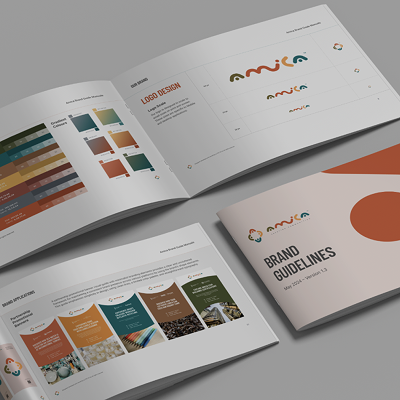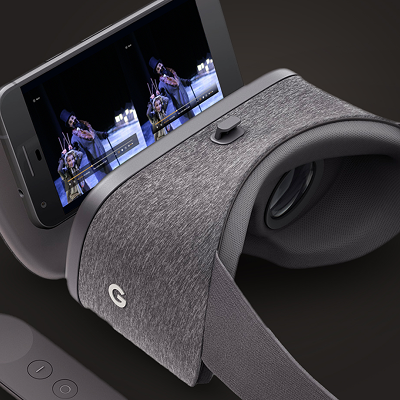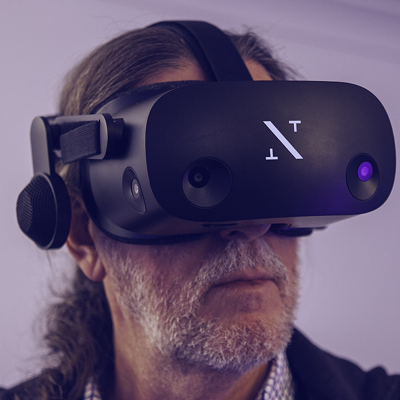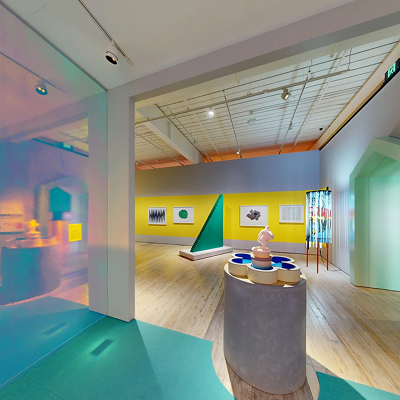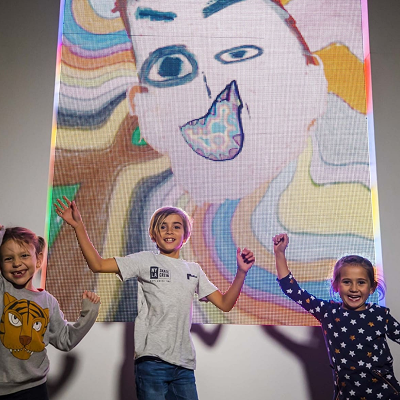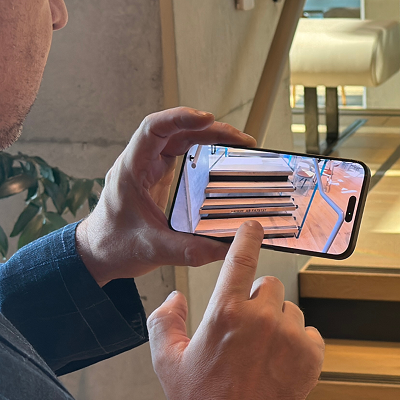Traditionally, when people thought of a museum, historical artifacts like dinosaur skeletons and suspended aeroplanes of the 1900s are what typically came to mind. But with the advent of contemporary art museums, the space has opened up to showcase the latest digital technologies and interactive experiences - and are also paving the way for unique methods of learning.
Digital experiences as art and entertainment
The museum space has now filled with digital art and experiences that allow the public to immerse themselves into different worlds, ranging from abstract waterfalls made from light to exploring the artist studios. These multi-sensory experiences are unlike most experiences that the general public will interact with outside of the museum space, and are routinely the most popular hits amongst audiences today. TeamLab is one of the most well known art collectives working in this area and are best known for their ‘Borderless’ experiences. Through using mirrored rooms or large projections with creative uses of light, they create beautifully colourful experiences that are other-worldly and captivating.
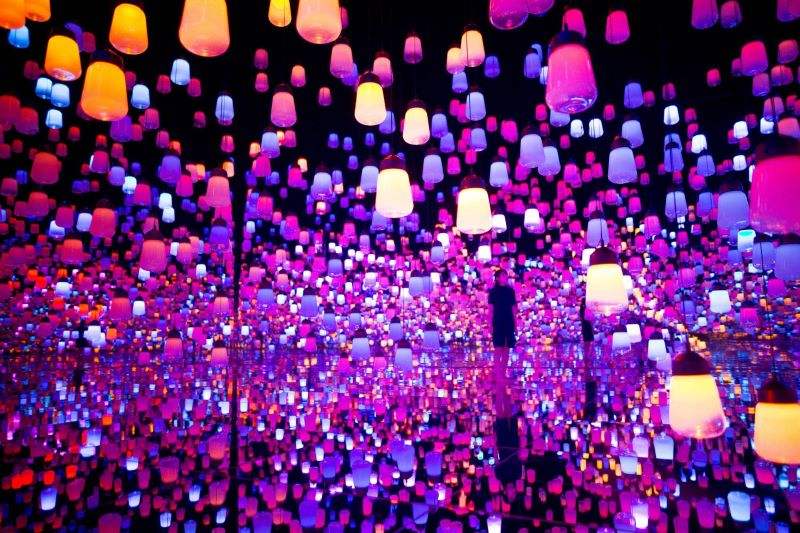
Digital experiences as education
Museums are hubs for all types of educational exhibitions. Many exhibitions are used to open up conversations and draw attention to different issues that are happening around the globe in engaging ways. ‘Changing Climate’ is a gallery display at the Australian Museum that explores topics surrounding the human impact on climate change, how to address it, and its impact on the Australian ecosystem. Within the gallery is a large touch screen for people to interact with the moving animations of different characters and scenes. Created by the digital art collective, Monkey Stack, the interactive play space features digital cards that cover 110 different facts about climate change alongside animations for both an informative and visual experience.
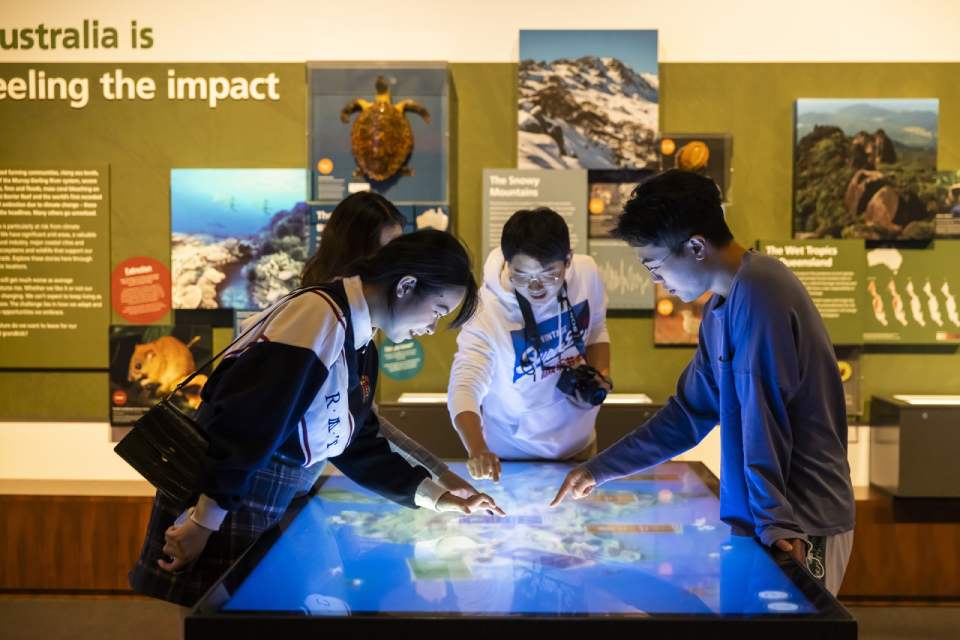
Australian Museum Changing Climate Interactive by Monkey Stack
Digital experiences in schools
With digital experiences being able to showcase both art and education, it is a medium that is immersive and can inform audiences on a variety of topics. These experiences can be utilised beyond the museum space - particularly within schools. Being that they’re capable of engaging audiences in imaginative ways, they can be used to help students in learning. Creative methods of education are growing more popular, but only few schools are beginning to integrate digital experiences as a way to support learning. One method that is increasingly being utilised is virtual reality (VR) education. Using VR devices opens up a world of opportunities for students to both learn in a different manner and also to interact with interesting experiences. Human Anatomy VR is an application that provides users with a 3D view of the different human systems - from the skeleton to the muscular and nervous system. Users can select and learn about each individual part of the human anatomy through the graphics and accompanying informative content that appears in the virtual space. This allows students to engage with learning material in a completely immersive way compared to traditional textbook methods.
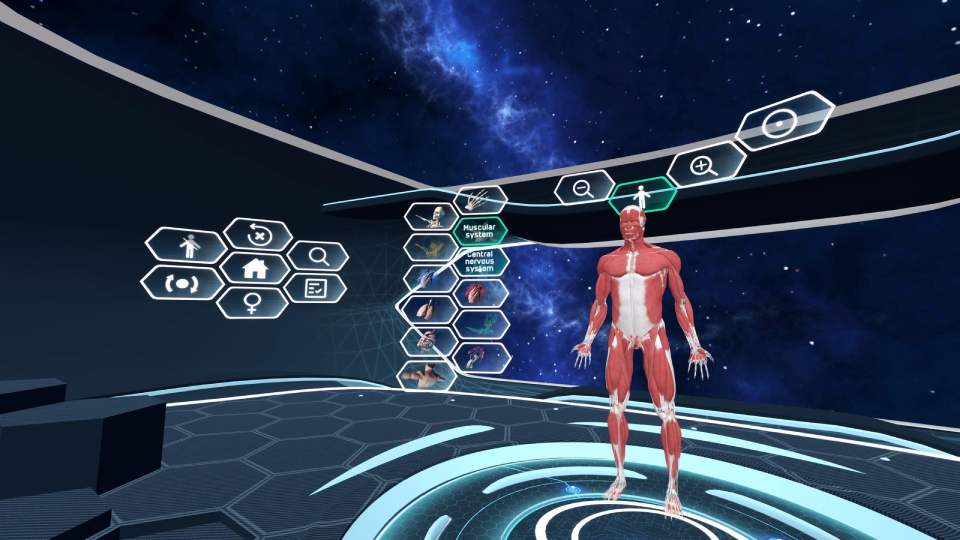
Conclusion
Digital experiences have become an essential part of museums for the right reasons. It is a versatile medium and can be both art and education - they can be immersive and engaging whilst informative. For this reason, digital and interactive experiences are an opportunity for schools to support learning and creativity amongst students.
Written by Amy Vuong
A UX/UI Designer at 42 Interactive focused on bringing meaningful projects to life through digital design.


